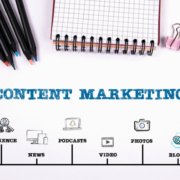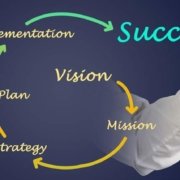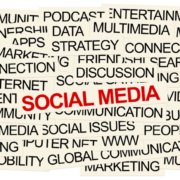Using Content Marketing to Generate More Leads, Tours, & Move-Ins
Content marketing, when done correctly, can help you attract and convert website visitors into qualified leads, scheduled tours, and move-ins.
But what content should you create? Most people immediately say “blog posts.” While blogs are a great tool to improve SEO, increase traffic, and engage visitors, you need to do more than simply “blog” if you want to generate leads, tours, and move-ins.
1. Invest in Premium Content Marketing
Your site probably has lots of ungated content, meaning people can access it without giving you their info. Your blog posts are examples of ungated content.
But offering premium content—something people can’t get anywhere else that is “gated” behind a form—motivates visitors to give you their contact information in exchange for the valuable content. From there, you can continue to nurture the prospects along their sales journey. So what should the premium content be? Think guides, e-books, “how-to” articles, and checklists.
A good place to promote your premium content is through a call-to-action (CTA) at the end of a blog post (e.g., “Get our free guide on aging well!”). The blog posts are the bait, your prospects are the fish, and the premium content serves as the hook.
Keep in mind that it’s important to have a variety of premium content because prospects will “bite” on different content based on their stage of readiness and interests.
2. Create Stellar Landing Pages
Your landing page is where the premium content “lives.” This the “gate” part in gated content. The landing page should include:
- An image of the premium content – so work with a graphic designer on a beautiful cover!
- A compelling description of what the prospect will learn – so work with a copywriter!
- A form to gather contact information in exchange for receiving the content. If you want to be sure to gather real emails, distribute the content to prospects via email rather than direct download.
Don’t overwhelm prospects with too many required fields! This is a first date, so simply ask for first and last name and email address. In terms of how to create and host landing pages, we recommend HubSpot because they offer progressive profiling so you can ask additional questions with every opt-in form. As prospects take more premium content, you get more information such as preferred location, their role, and desired lifestyle.
Remember, marketing’s job is to “plate up” sales-qualified leads (SQLs) to the sales team. Each landing page represents a piece of content related to the sales funnel. Your sales team will be especially interested in prospects who opt into content that indicates they’re sales-ready. And by knowing what content the SQL has downloaded, your sales team can have a more productive conversation when they talk to the prospect on the phone or meet face-to-face.
3. Set Up Effective Senior Living Marketing Automation to Nurture Leads
Congratulations, you took an anonymous website visitor and converted them to a lead – great! Now, it’s time to nurture these leads to create face-to-face or voice-to-voice interactions with the sales team.
However, if you reel in the fish too quickly, it will get spooked and drop off the line. That is what happens when you send every lead directly into your CRM. Instead, use a marketing automation platform that will create automated workflows to provide additional content and offers (e.g., tours, lunches, home visits, events) that are relevant to the lead based on the “bait” that reeled them in.
For example, if someone downloads a piece of educational content on tips for aging well, this suggests they are at the top of the sales funnel and perhaps just beginning to learn about senior living options. How you nurture them will be a lot different from the way you nurture someone who’s downloaded a guide on how to finance different senior living arrangements.
If you follow these three steps, you will establish your brand as a thought leader and you’ll continue to bring prospects back to your website throughout their journey. Best of all? You’ll be serving up SQLs that your sales team can take across the finish line.
If you need assistance setting up these systems, please contact us or call 888.620.9832.











